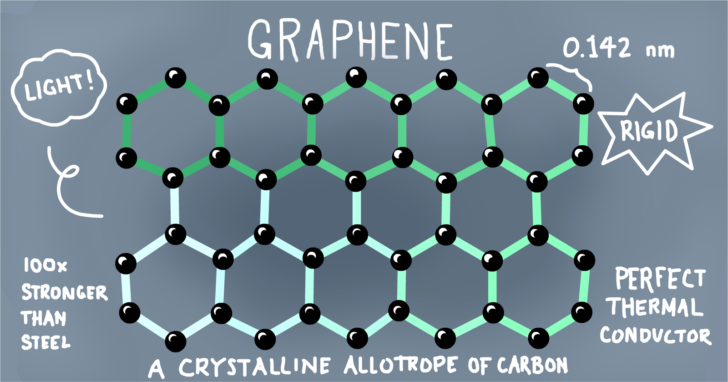Graphene encounters bump in the road

A study in Advanced Materials applied a newly developed protocol to test the quality of graphene. It was put to use to test worldwide graphene quality, which was found to be poor, possibly damping the success story that is graphene.
Graphene purchased from 60 producers around the world was studied by employing a systematic and reliable protocol that the authors developed. The quality was investigated using five different analytical tools: optical microscopy to identify flake size; atomic force microscopy to measure the thickness of graphene stacks; Raman spectroscopy which provides information on the structural integrity of the sample as well as indication of presence of graphene oxide and reduced graphene oxide; X-ray photoelectron spectroscopy to measure carbon content (i.e. establish the graphene’s purity); and scanning electron microscopy and transmission electron microscopy to further characterize sample morphology.
The findings were published in Advanced Materials, showing somewhat disheartening results: “The quality of the graphene produced in the world today is rather poor, not optimal for most applications, and most companies are producing graphite microplatelets. This is possibly the main reason for the slow development of graphene applications, which usually require a customized solution in terms of graphene properties. […] our extensive studies of graphene production worldwide indicate that there is almost no high-quality graphene, as defined by ISO, in the market yet.”
In more detail, the quality problems lie in two areas. First, the team points out, they found a large number of the samples on the market labelled as graphene to actually be graphene oxide and reduced graphene oxide. Secondly, the conducted carbon content analysis showed that in many cases there is substantial contamination and a large number of companies produce material with a low carbon content. This contamination can have many possible origins, bust most likely stems from chemicals used in production processes. Contamination also affects the number of sp2 bonds. The researchers report not having been able to found a sample with more than 60% sp2 bonds, with crystalline graphene as the measuring stick at 100% sp2 bonds.
Among the established methods for commercial graphene production, liquid-phase exfoliation (LPE) of graphite is one of the methods used most frequently. The mechanism behind LPE is based on the fact that graphite is a layered material and essentially can be seen as individual graphene crystals stacked one on top of each other. The LPE process involves milling graphite into a powder, and separating the particles into tiny flakes by applying mechanical forces in a liquid. The graphene-containing flakes are then separated from the remaining material.
The authors argue that the creation of stringent standards for graphene characterization and production, taking into account both the physical properties, as well as the requirements from the particular application, is the only way forward to create a healthy and reliable worldwide graphene market.
Driving home the point that careful characterization is key to the developing market for graphene products, the authors mention that different applications would require different grade of graphene: "For instance, the best performance in composite materials applications would be achieved with large flakes which are two to three monolayers thick. At the same time, the best electrodes for neurological applications are prepared from monolayer flakes, etc. We envisage that each particular application would require fine-tuning of the properties of the graphene material (in terms of its thickness and size distributions, basal plane and edge functionalization, etc.)."
Reacting to the study, Danish professor Peter Bøggild cautions that it should be noted that the study does not cover all the types of bulk graphene on the market. "Moreover, although the authors analyses an impressive number of LPE-manufactured products, they could have eliminated any accusations of potential bias by specifying the criteria they used to select the products for analysis." He continues that it is also possible that they unintentionally missed high-quality graphene sold by a few excellent producers. And, as the researchers mention, different applications generally make use of different characteristics of graphene – which makes it difficult to come up with a universal metric of quality.
“Nevertheless" he concludes, "the work is a timely and ambitious example of the rigorous mindset needed to make rapid progress, not just in graphene research, but in work on any nanomaterial entering the market. To put it bluntly, there can be no quality without quality control."
Source: https://www.nanowerk.com/spotlight/spotid=51233.php
https://www.nature.com/articles/d41586-018-06939-4
Original article: https://onlinelibrary.wiley.com/doi/full/10.1002/adma.201803784